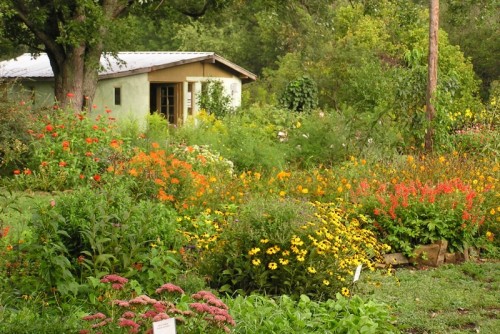Denaturing Nature

Every semester, classes from across departments at Kenyon College head off campus with the intention of interacting with Knox County — in parks, businesses, hospitals, organizations and more — for what the College calls community engaged learning (CEL) courses. Designed by Kenyon faculty in partnership with local organizations and the Office for Community Partnerships, CEL classes forge relationships throughout the county and work to address community needs while giving Kenyon students hands-on experiences around and off the Hill. Kenyon CEL offerings include partnerships with Mount Vernon Nazarene University, Ariel-Foundation Park and Wiggin Street Elementary School, but other classes root their syllabi both in our local community and broader locations, working with groups in Columbus, Cleveland and even Quito, Ecuador.
Professor Alyssa Quinn, who joined Kenyon this fall as assistant professor of English, spent their summer making a big move to Mount Vernon and preparing for their first semester on the Hill. They also researched and designed a first-year English course titled "Denaturing 'Nature,'" which works with the Kenyon College grounds, the Kenyon Farm and the Brown Family Environmental Center in its examination of the concept of “nature” as a social construct. Students enrolled in the class take tours of the three locations and work to interact with them outside of the traditional notion of “nature” and “culture” as two separate realms.
“I really wanted to find some way to destabilize the binary between reading and thinking about ‘nature’ in the world,” Quinn said, “so it made sense to actually get outside a little bit.”
In addition to coordinating with different organizations and arranging tours of the three different facilities with David Heithaus, Claire Haynes and Bethany McCarty, respectively, Quinn also spent a lot of time researching widely in order to provide students with a thorough and diverse understanding of nature writing. “It was a lot of work,” they said, “but I feel a lot of connection to the syllabus because of that.”
Quinn’s hard work shines through in the wonderful work and words of their students. Each time the class takes an outdoor field trip, the students are tasked with creating "ecollages," which asks students to “bring together, to collect, to form a mini ecosystem on the page.” Invited to take risks and think outside the box, final projects ranged from handmade recipe books to poems to short films and more. Students have the opportunity to explore, bend and cross genres of art-making as they produce a total of three ecollage products inspired by their adventures.
Hayden Ashwroth ’27, who was enrolled in Quinn’s course this fall, testified to the enrichment gained from off-campus interaction in class. “One of the main themes of this course is interconnectivity in nature: how all life is inherently intertwined,” he said. “Interacting with the BFEC and the farm firsthand elevated my understanding of that concept, because nature was brought into the foreground. I realized that everything we talked about in class didn’t have to be abstract — I could go out into the world and see it unfold on so many levels.”
There’s also a special sort of exploration and connection in this semester’s "Denaturing 'Nature'" offering: everyone in the class — including Quinn — is brand new to Kenyon. While CEL courses are fantastic ways to broaden any student-community relationship, this one is particularly suited to introducing Kenyon’s greenest to Kenyon’s greenery.